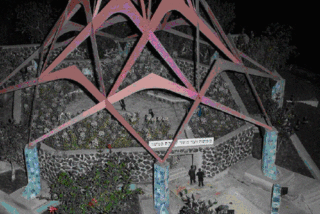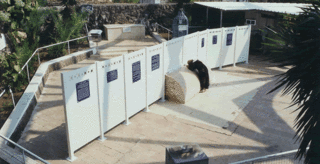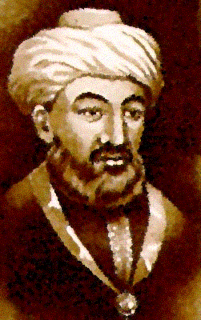During an all to quick vacation on the Kinneret, I took the opportunity to pay my respects at the Tomb of the Rambam. As with everyone else I know, the impact of Maimonides on my life, mind and soul has been profound. He dominated my (just shy of a) decade of learning with the Rov. He was the focus of everything we did at Harvard under Professor Twersky. His thought frames every discussion of the interaction of Judaism and general culture. Even my most recently published article, about the nigh on absolute neglect of Maimonides b Tosafist and late Ashkenazic scholars, is simply a reverse example of what Professor Twersky called, 'the endless fascination of Maimonides.'
All of that, of course, only requires studying the Rambam. However, the experience of being in the quasi-physical presence of a great figure from the past is very powerful. It's rooted in the Jewish sense of time perception, viewing Time as fluid, as a continuum. There are very few places (especially in Israel) where one can commune with one's memories of medieval Gedole Torah. The Rambam is one such rare example, and that's another reason why I try to go whenever I'm in Tiberias.
Of course, the Rambam emerges from his writings (including his letters) as a somewhat austere individual. Thus, the white washed, simple tomb that I remember from my youth is that which fit him best (sans the gate):

I was, therefore, a little taken aback when they started 'improving' the site. First, the monument itself was ‘fixed up.’
 OK. That part wasn’t so bad. It’s actually quite beautiful. The problem is that they then covered the whole thing with this hideous tower:
OK. That part wasn’t so bad. It’s actually quite beautiful. The problem is that they then covered the whole thing with this hideous tower: Then, came what I thought was the piece-de-resistance. The Rambam was turned into a miracle worker/intercessor. And in typical fashion, they destroyed the tomb by sticking on it the ugliest mechitza you ever saw.
Then, came what I thought was the piece-de-resistance. The Rambam was turned into a miracle worker/intercessor. And in typical fashion, they destroyed the tomb by sticking on it the ugliest mechitza you ever saw. I thought that was the end, until yesterday (and I’m really sorry I didn’t have a camera). The place was teeming with people asking the Rambam to work miracles. There were Rambam souvenirs everywhere. I’m sure he’s none too pleased, considering what he wrote about amulets, now that he himself has become one. The nadir was reached when I saw a bottle of ‘Sacred Araq,’ guaranteed to cure what ails you. On the label, looking extremely uncomfortable, was (you guessed it!):
I thought that was the end, until yesterday (and I’m really sorry I didn’t have a camera). The place was teeming with people asking the Rambam to work miracles. There were Rambam souvenirs everywhere. I’m sure he’s none too pleased, considering what he wrote about amulets, now that he himself has become one. The nadir was reached when I saw a bottle of ‘Sacred Araq,’ guaranteed to cure what ails you. On the label, looking extremely uncomfortable, was (you guessed it!): I think I’ll go read Hilkhos De’os, chapters 1 and 2. (I’m very angry).
I think I’ll go read Hilkhos De’os, chapters 1 and 2. (I’m very angry).
7 comments:
1. where is your article published? i would love to read it!
2. surely you know that in all likelihood rambam never made it to israel (alive).
3.i never saw the appeal of going to dead people. it never worked for me. perhaps my priestly blood?
1. The Article is in Beerot Yitzhak: Studies in Memory of Yitzhak Twersky (Harvard, 2005).
2. The Rambam died in Egypt and was buried in Tiberias. What's so unusual about that?
I think the veneration is rather funny, specifically because Rambam would have been livid.
I agree that the tomb's accretions are icky.
hey, at least it was Araq and not water. Enough of that might cure some ailments :-)
don't worry about it JRW. the chances that the Rambam is actually buried there are about 0. btw: Rambam wrote against putting any type of tombstone.
I beg to differ. A tradition that dates back to less than fifty years after the Rambam died, and confirmed by persistence is a very good indication of authenticity.
what bothers me about this whole thing is that the rambam's kever has this whole huge edifice and right next to it is a small cemetary where tanoim and amoraim are buried.
reb yochanan ben zakhai
rav ami and rav asi
and others
yes the rambam is an amud hapsak and he is beyond anything any of us can comprehend but
he was interperting these tanoim and amoroim's words
they were even greater than the rambam
yet the edifice around his kever totally outdoes anything by the other kevorim right next to it (there is nothing built around those kevarim)
Post a Comment